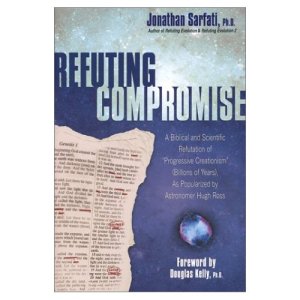Refuting Compromise


Before I left Langley, one of the members there gave me this book, Refuting Compromise: A Biblical and Scientific Refutation of Progressive Creationism, by Jonathan Sarfati. This book deals with the old-earth views of Hugh Ross. I’m not going to write a complete review of it. I think there are some helpful things in it and its strength is in putting forward many good biblical arguments against the idea of a universe that’s billions of years old. However, I prefer the book of Jason Lisle which I hope to review here tomorrow. I’ll explain why tomorrow.
For today, I just wanted to mention one interesting point about this book by Sarfati. In chapter 12, he provides some geological evidence which confirms the age of the earth given in Scripture. One of the evidences has to do with banded rock formations that resulted from the 1980 eruption of Mount St. Helens. This eruption produced thick layers of sediment in a number of hours. This demonstrates that certain geological features need not necessarily take long periods of time to form. Catastrophes (such as the biblical flood in the days of Noah) can account for a good deal of what we see in geology.
When I was a young lad, my father took me once to a presentation in Edmonton by Steve Austin. Drawn by his super-hero sounding name (wasn’t he the Six Million Dollar Man?), I found his presentation to be fascinating. He spoke about his studies of Mount St. Helens and the sedimentary layers resulting from its eruption a couple of years earlier. On page 370 of Sarfati’s book there’s a picture of the fine layering at Mount St. Helens. The photo credit caught my eye: Steve Austin. Here’s a link to some of Austin’s work on this.


